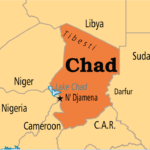“Products are made in a factory, but brands are created in the mind.” – Walter Landor
Last week, we defined what branding is, its benefits as well as its elements. Today we will discuss the process of building a brand. The process of shaping an envisioned, desirable perception about your business and products is what brand development is all about.
Regardless of the size or complexity of your business, the principles of brand development are the same even if the stakes might, obviously, vary. You have to be thoughtful and deliberate in developing a strategy that creates an identity, delivers on your promise and holds a mindshare of the customer and other stakeholders. At the end of everything, all brand development activities are about positioning and communication, and should include the following:
Understand your business: Understanding your business is the first step to developing your brand strategy. What business are you really into? Are you selling to middlemen and distributors or are you selling to end-users? Understanding your business also means understanding your competitors, industry, and market. Understanding your competitors and what they are doing is critical to doing things better than them.
What can you deliver? Beyond understanding your competitors and industry, you must also understand your customers. Understanding your customers is fundamental to knowing what you can do to attract and retain their loyalty. This includes knowing what the customers really want, how and where they want it. Price points and quality expectations are particularly important to varying degrees with different customers.
Understand the pathways to earning the customers’ loyalty: Generally, there are just two interwoven pathways to the customers’ minds. There is a technical pathway and an emotional pathway. The technical pathway is about such variables as the physical quality of your products, price, service response, etc. On the other hand, the emotional pathway is about the soft relationship management issues between your business and your customers.
Plan for long term relationships: The way to building brands in a way that all stakeholders, from customers to suppliers, financiers, etc. want to always do business with you is by thinking long term on issues. Thinking long term helps you do what is right no matter the transient inconveniences. This is key to earning the loyalty of your customers.
Be authentic: Don’t just ‘copy and paste’ what others are doing without being innovative by differentiating your business. Not only would ‘copy and paste’ commoditise you, but you may also appear artificial and unexciting. True, we may deliver the same products as others, but we can always differentiate ourselves through our services. We see this often in restaurants. The food and drinks might all the be the similar. But the ambience and the service offered by one restaurant simply distinguishes itself from others and with that comes higher prices for which their discerning clients gladly pay.
Don’t forget the designs! Obviously, building a brand also means developing a business or product name, logo, tagline, website content, etc. Take your time and consult with professionals who will advise you. Usually, the simpler the better. Taking into consideration market nuances and sentiments is important in design concepts.
Communicate! There are two aspects of communications that should be achieved in brand development: reach and connection. Reach is about getting to both your current and potential customers while connection is about ensuring that you achieve the desired objective of the reach.
One of the common communication errors that I see in our environment is that of literal translation of English expressions into local languages or the literal translations of expressions in one local language into another! This not only misses the ‘connection’ object of communication but shows lack of diligence and professionalism. If you feel it is relevant to deliver English catchphrases in a local language, the appropriate thing to do is to get the equivalent, not literal translation, of the phrase in that language. It should be the same thing if you wish to achieve the duplicate objective across two local languages.
Beyond the strategy and actual development of your brand, a few other actions are necessary:
‘Care and Feeding’: It is not sufficient that a good brand is developed. It must be nurtured and protected through ‘care and feeding’. Care and feeding are about delivering and standing by the promised value at all times. A specific aspect of ‘care and feeding’ is to ensure that you do not water down the quality and standards of your brand through reckless price discounts as a result of competitive pressures. Just think of the consequences of Apple struggling to compete with the lower-end smartphones and computers.
Realignment: Building a brand takes time. However, it happens that for perfectly legitimate reasons, certain changes must be incorporated from time to time. You can, therefore, consider brand realignments in tandem with emerging realities. Otherwise, longevity of brand focus is a measure of the strength of a brand DNA.
Toyota Motor Corporation is one of the most successful car manufacturing companies in the world. Over the ‘short years’ of its life, it has surpassed many older car manufacturing companies through innovation and customer-centric focus. Toyota’s patented manufacturing methods, knows as Toyota Production System (‘TPS’), which forms the core of its manufacturing strategy is built on three key philosophies viz; Customer first, Employee satisfaction, and Company Stability. The objectives of TPS are to achieve highest quality at the lowest cost in the shortest lead time possible. At the end of everything, TPS is about delivering quality products at affordable prices to various sub-classes of customers for decades on end.
This brings us to the end of this series and next week we will take up cash flow management.

 Join Daily Trust WhatsApp Community For Quick Access To News and Happenings Around You.
Join Daily Trust WhatsApp Community For Quick Access To News and Happenings Around You.


